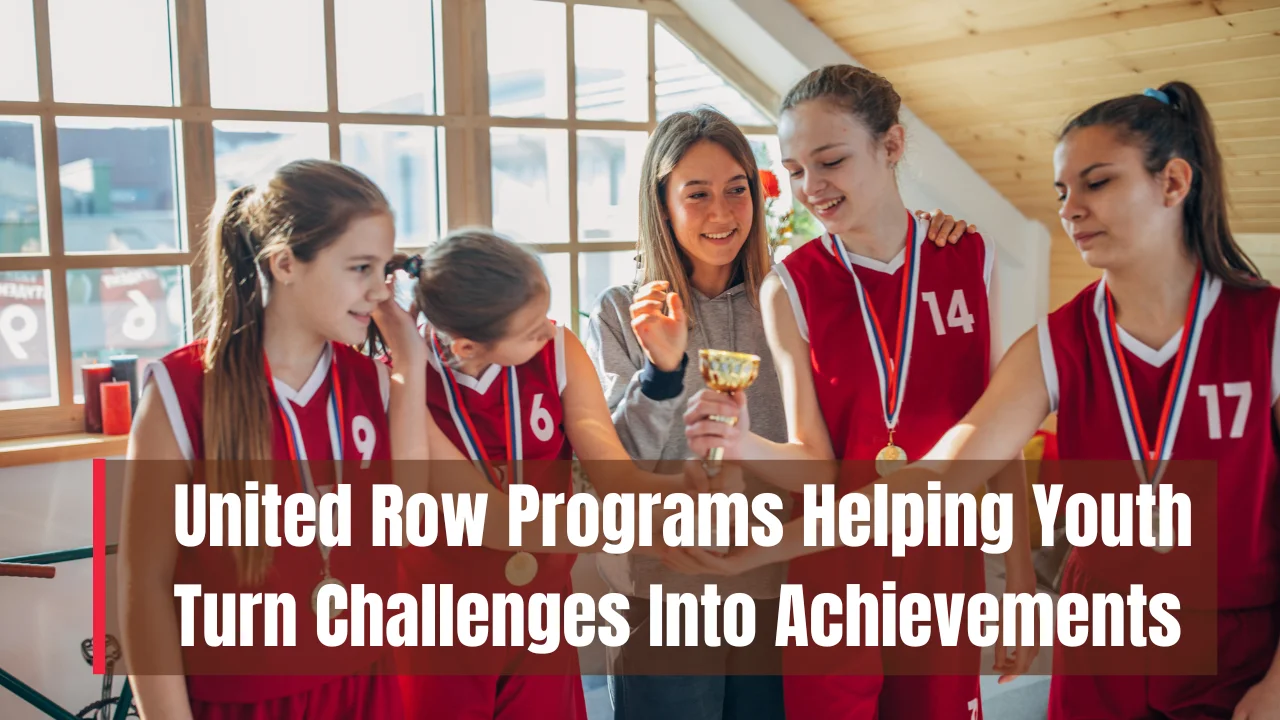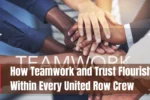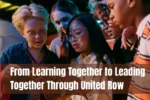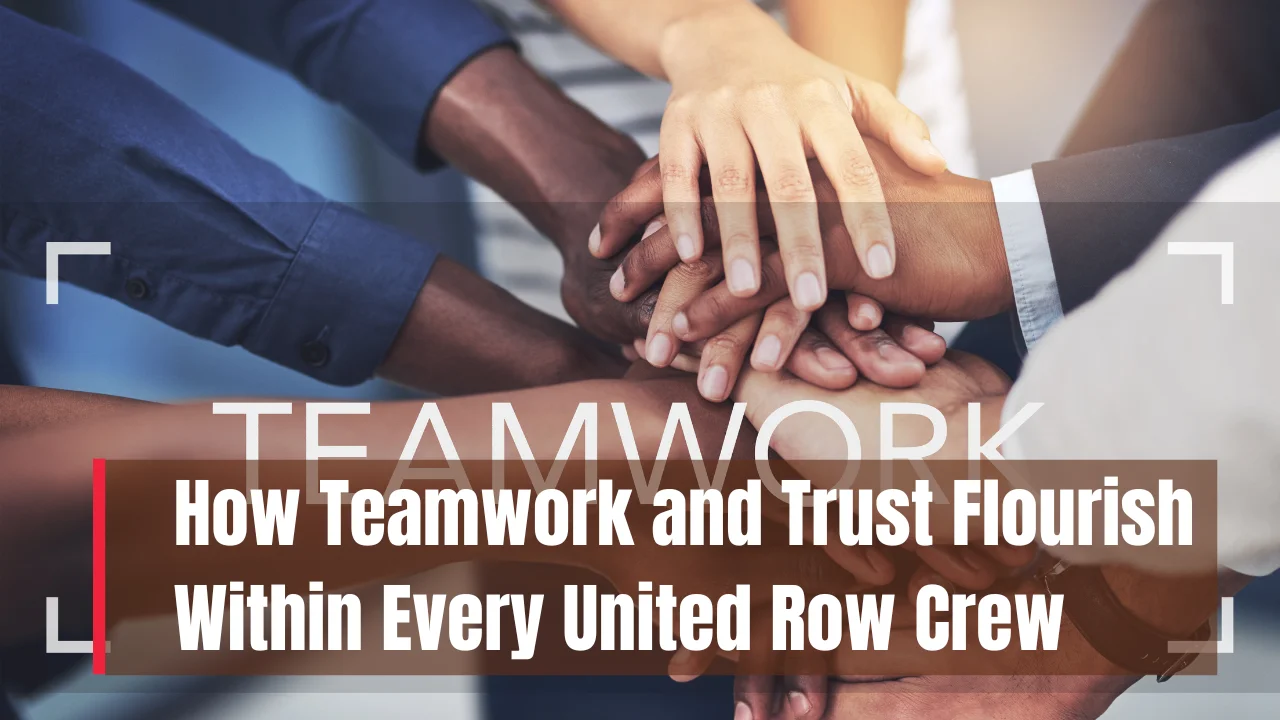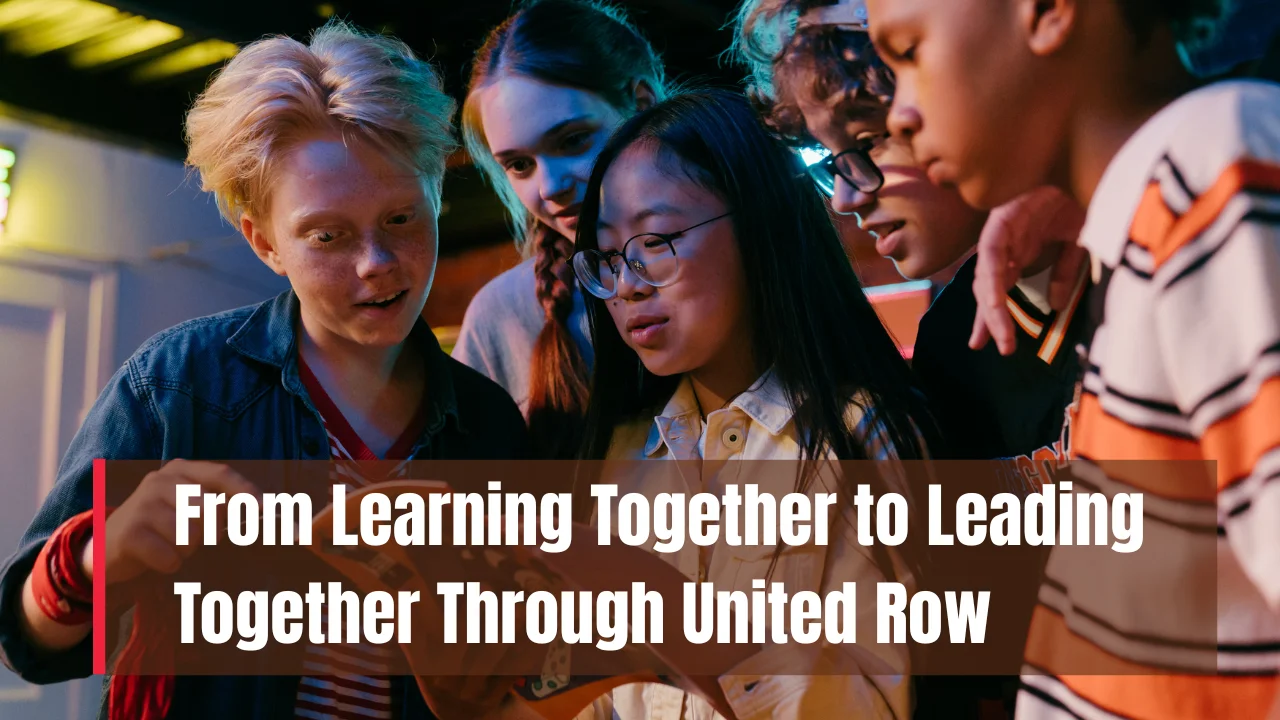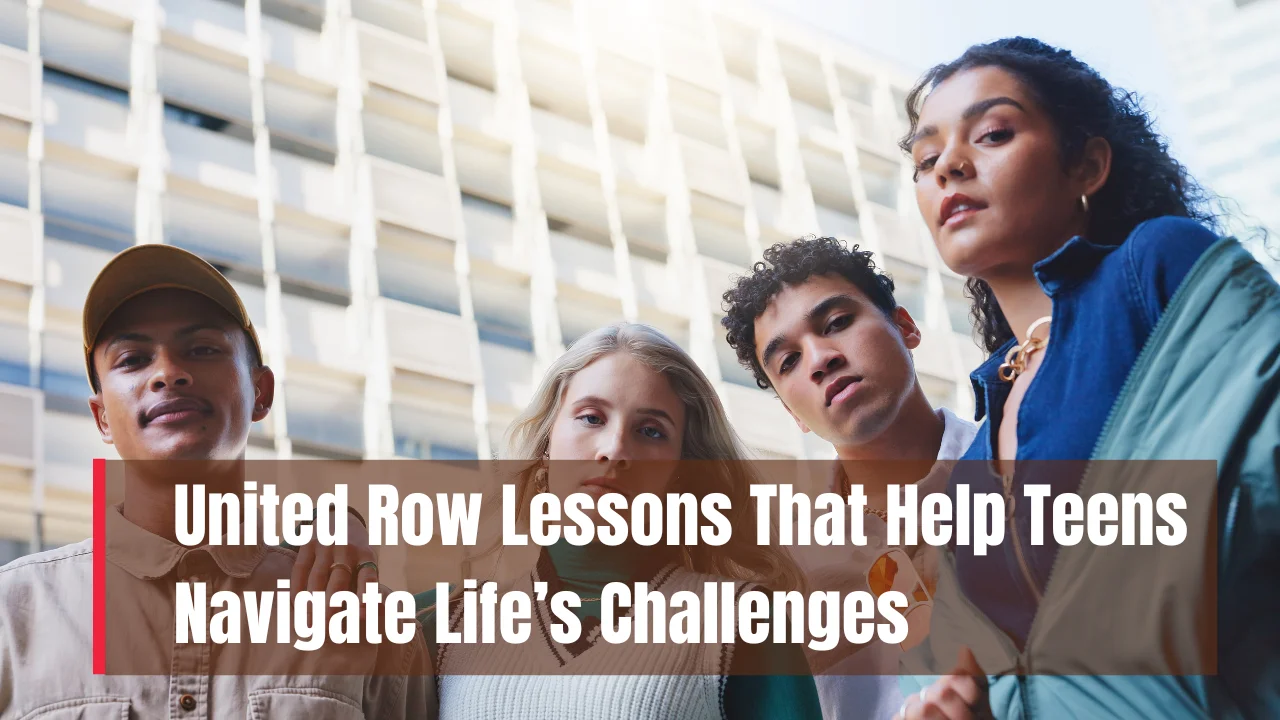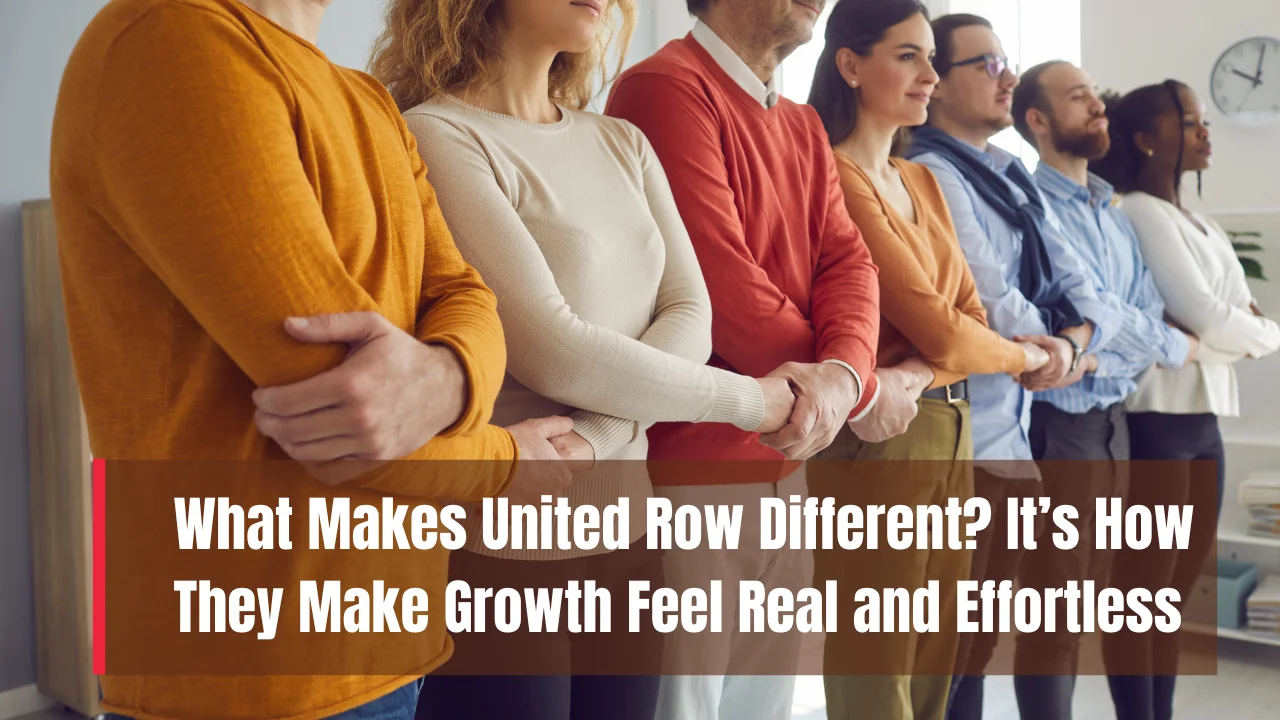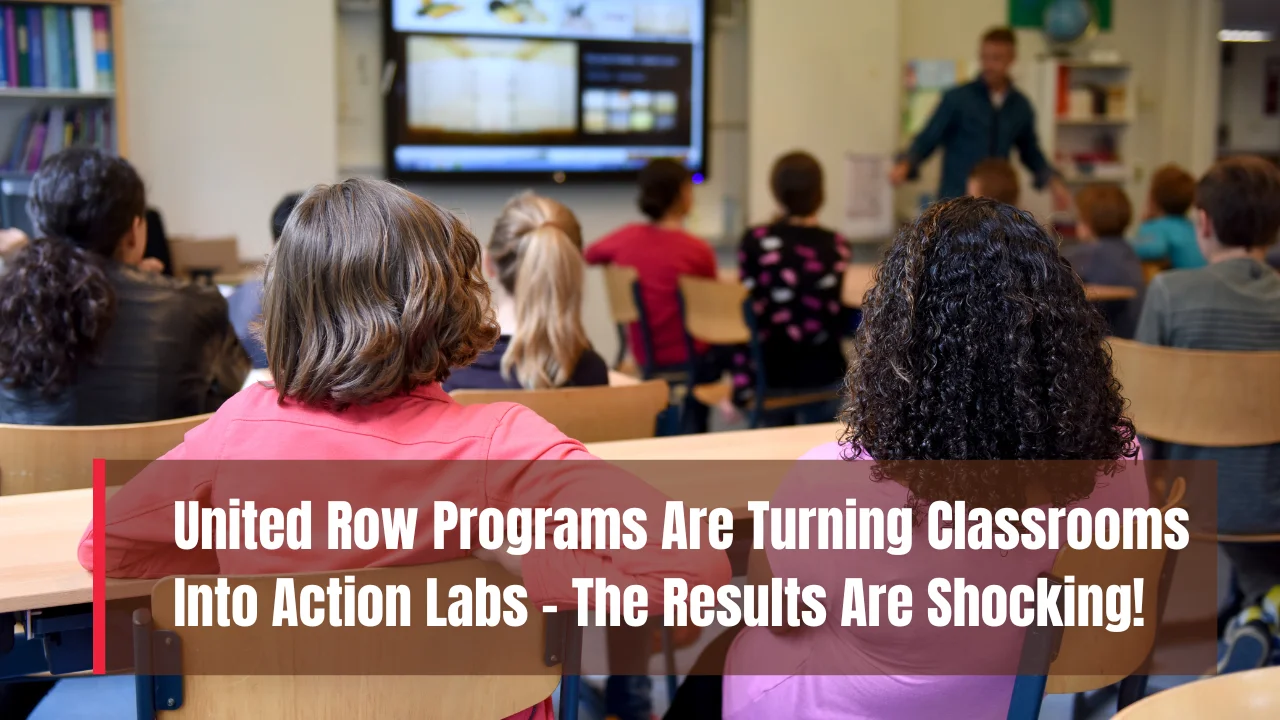United Row Programs: United Row Programs are redefining how we support and empower the next generation. Built on the principles of discipline, teamwork, and personal responsibility, these programs are offering young people a rare chance to transform challenges into stepping stones for success. In a world where youth often struggle with direction, self-worth, and community, rowing becomes more than a sport—it becomes a life path.
This article explores how these initiatives are shaping futures. You’ll learn how United Row Programs combine physical training with mentorship, creating an environment where personal growth thrives. From building leadership skills to improving mental health, we’ll dive deep into how these programs impact lives, and why they’re more than just an after-school activity.
United Row Programs: A Structured Path to Youth Transformation
At their core, United Row Programs are designed to give structure, motivation, and purpose to young people through the discipline of rowing. These programs reach out to youth—often from underrepresented or at-risk backgrounds—and offer them a way to find confidence and direction. By blending physical activity with emotional and mental guidance, they open doors that traditional educational or social systems often leave closed. More than physical training, they focus on mentorship, emotional resilience, and life planning. The goal is long-term transformation through consistent support, team-building, and shared victories on and off the water.
Overview Table: A Glance at United Row Programs
| Aspect | Details |
| Program Type | Community-based youth development through rowing |
| Target Audience | Youth from diverse or challenging backgrounds |
| Core Components | Rowing, mentorship, life skills, academic support |
| Key Benefits | Confidence, discipline, teamwork, leadership |
| Physical Outcomes | Improved fitness, coordination, endurance |
| Emotional Growth | Boosted self-esteem, reduced anxiety, mental clarity |
| Long-Term Impact | Better education, career readiness, social integration |
| Community Role | Volunteers, schools, local sponsors involved in support |
What Are United Row Programs?
United Row Programs are not just rowing clubs—they are full-scale youth empowerment models. They work to engage young individuals, particularly those who may be struggling with personal, social, or academic issues. What makes these programs stand out is how they use a team sport to develop life skills. In rowing, everyone must pull together—literally and mentally. There’s no room for ego, no star player. This creates a space where youth feel equally important, fostering inclusion and belonging.
These programs are typically run through partnerships between nonprofit organizations, schools, and local communities. They include structured training schedules, character-building sessions, and often, academic tutoring or career advice. The combination helps youth not only stay out of trouble but discover their strengths and potential.
Benefits of Rowing for Youth
Participation in rowing brings more than physical benefits—it supports well-rounded youth development. Here’s how:
- Boosts Physical Health: Regular rowing builds cardiovascular strength, muscle endurance, and flexibility.
- Enhances Mental Health Support: The rhythm of rowing is meditative, reducing anxiety and stress.
- Promotes Self-Discipline: Learning to row requires consistent effort, time management, and commitment.
- Improves Focus and Academic Results: The structure and routine can positively influence school habits.
- Strengthens Team-Building Abilities: Everyone must work together, building trust and communication.
- Fosters Youth Empowerment: Feeling part of a team helps develop confidence and leadership.
These outcomes are especially critical for young people navigating complex life environments. Rowing provides a healthy outlet to process emotions while staying engaged in something meaningful.
How United Row Programs Help Youth Succeed
Success in United Row Programs isn’t measured in medals—it’s seen in changed lives. These programs are intentional about long-term outcomes. Rowers are guided not just through water drills, but through academic mentoring, personal goal setting, and leadership training.
Mentors play a central role. They are often individuals who understand the pressures youth face, and they act as role models, offering encouragement and real-world advice. The goal is to build resilience, so that when life throws challenges, these young people are equipped to handle them.
Programs often include sessions on conflict resolution, career exploration, and social-emotional learning. For many youth, this may be the only space where they feel truly heard and supported. The combination of physical challenge and emotional care is a powerful formula for success.
Key Features of Successful United Row Programs
- Mentorship and Leadership Development
Every rower is connected with mentors who help guide their personal journey. Leadership is developed not through theory, but through real-life practice—being responsible, supporting teammates, and leading by example. - Academic Support and Life Skills Training
These programs understand that success in the boat is only part of the journey. Academic support ensures participants stay on track in school, while life skills sessions teach everything from financial literacy to communication.
Real-Life Impact Stories
In many cities, United Row Programs have become stories of hope. Young people who once felt invisible or incapable have discovered new identities. A teenager who never believed they could finish school ends up graduating and applying to college. A youth once involved in street life now trains others as a mentor.
The shared stories often include common themes: finding purpose, overcoming fear, building real friendships, and believing in oneself again. These aren’t just isolated successes—they’re repeatable outcomes when the right support system is in place. That’s the beauty of rowing: it teaches that progress is made stroke by stroke, day by day.
Community Involvement and Support
These programs don’t exist in a vacuum. United Row Programs thrive when communities invest in them. Local schools, parents, and even businesses contribute time, money, or space. Volunteers coach, tutor, or simply cheer at events.
This shared responsibility creates a circle of care. Youth feel supported from all directions, and communities see lower dropout rates, reduced crime, and stronger social bonds. It’s a win-win, proving that youth development is not just a family’s job—it’s a community mission.
Why Every Community Needs United Row Programs
With the growing need for effective youth development, introducing United Row Programs can be a game-changer. These programs are not expensive to run compared to their impact. They reduce at-risk behaviors, enhance education outcomes, and create future leaders.
Their ability to address emotional, social, and physical needs in one cohesive system makes them stand out. And most importantly, they provide a safe, structured, and inspiring environment. As more communities adopt rowing as a tool for growth, we move toward a society where no youth is left without support.
Final Thoughts
United Row Programs are proving that challenges don’t have to define a young person’s future. Through discipline, mentorship, and teamwork, these programs are giving youth the tools to write a new story—one filled with purpose, confidence, and connection. They show that success doesn’t come overnight but grows with every push, every pull, and every stroke forward.
If you’re a parent, educator, or community leader, take the time to explore how a rowing program could benefit your area. Have your own experience or insight? Share your thoughts below—we’d love to hear your story. And if you’re curious about your personal growth journey, check out your horoscope and start reflecting on your strengths today.
FAQs
No. These programs welcome all youth, regardless of athletic ability. The goal is personal growth, not competition.
Check with local community centers, schools, or nonprofit organizations that offer youth rowing. Many have open applications.
Typically, they are open to youth ages 12–18, but some may include younger or older participants depending on the program.
Many programs offer year-round activities, including indoor training during colder months and rowing during warmer seasons.
Absolutely. You can volunteer, donate, mentor, or assist in organizing events or outreach efforts.
